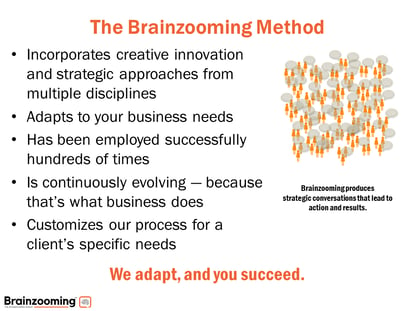On Twitter recently, a full-time freelancer complained about a part-time freelancer, who also has a full-time job, using a strategy of undercutting the market with overly low-priced proposals for creative projects. She complained that part-time competitors' pricing strategies were unfairly bringing down client perceptions of market prices.
 In any business, competitors in related markets can enter "your" space as an add-on strategy to what they do. Since what you do isn't a core market for them, they're often operating from different cost structures and commitments to the market. They may be quite willing to implement low-priced strategies to grab market share at the expense of traditional competitors.
In any business, competitors in related markets can enter "your" space as an add-on strategy to what they do. Since what you do isn't a core market for them, they're often operating from different cost structures and commitments to the market. They may be quite willing to implement low-priced strategies to grab market share at the expense of traditional competitors.
Back in my corporate position in business-to-business transportation, we endured more than a decade of UPS and FedEx, much larger competitors in adjacent markets, serving a large, profitable portion of our market through implementing new pricing strategies. Our company, tied down by various real and perceived roadblocks, never delivered a shot across the bow to let UPS and FedEx know they weren't welcome in our market. Ironically, both competitors eventually entered the market using a more traditional strategy with some successes, but many challenges.
9 Strategy Ideas You Could Try
If part-time competitors are wreaking havoc in your market with low-priced products and services, here are 9 strategy ideas to protect your overall competitive position and make it harder for them to compete:
1. Identify where you can be a part-time player, employing a strategy to disrupt that market and grow your business.
2. Dramatically change your processes and cost structure to compete at a lower price.
3. Since your core market is your full-time focus, compete through some combination of greater responsiveness, sharper focus, being smarter about what you do, offering better quality, and/or providing better overall value.
4. Offer more options as a way to showcase your specialization.
5. Provide questions a potential customer should ask and get answered to ensure a low priced part-timer is a legitimate provider.
6. Offer an introductory promotional price in exchange for a longer-term commitment.
7. Develop other revenue streams which subsidize your primary market.
8. Buy and re-sell the part timer's service to more price-sensitive customers.
9. Offer a satisfaction guarantee on the part-time competitor's work. If a customer isn't happy with the part-timers work, offer a discount to "fix" it.
What Are Your Strategy Ideas?
Are you facing low-priced, part-time competitors? What strategy ideas are working or not working for you in dealing with them? - Mike Brown
The Brainzooming Group helps make smart organizations more successful by rapidly expanding their strategic options and creating innovative plans they can efficiently implement. Email us at info@brainzooming.com or call us at 816-509-5320 to see how we can help you devise a successful innovation strategy for your organization.





